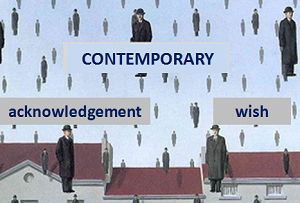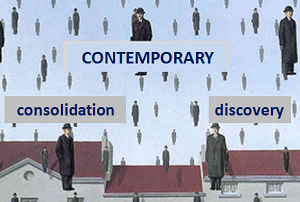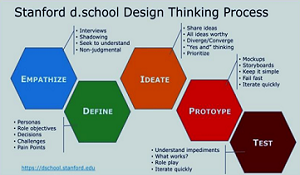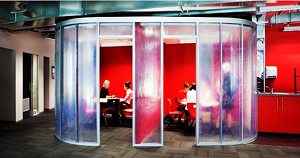3rd session abstracts

The ability to think about the future is, in fact, one of the keys to our evolution. At least in a certain sense all human beings are futurists: we are so in a way that we could call naive, common sense. Jake Dunagan expressed this concept as follows: “We all think about the future, we just don’t do it very well”.
Today we are in a historical period in which the reflection on the future is increasingly important as it faces us with dilemmas that concern not only the success of a company or the strategy of a country but also global challenges for humanity such as climate crisis, the crisis of capitalism and democracy, growing economic and social inequalities. More than ever it is necessary to acquire the ability to make informed decisions considering the infinite possibilities that the future offers us; a fundamental skill for the 21st century that we could call the sense of the future.
 According to UNESCO, which calls this skill Futures Literacy (FL), it is about that ability that “allows people to better understand the role that the future will have in what they see and do”, putting them in a position to use the future in the best way. A real individual and social awareness that allows us to understand what elements we can influence and which are useful scenarios to anticipate in order to react in the best possible way. This is why, in a context in which pessimism and an attitude of renunciation towards the future are widespread among the younger generations, a context in which hope is a feeling in crisis, developing a sense of the future can be the key to rebalancing our relationship with the world and with current reality and, consequently, using the future itself to build positive scenarios to act and achieve. After all, “the future we imagine drives our expectations, disappointments and willingness to invest or change.” (UNESCO): without optimistic visions, we would do nothing but direct the future towards its worst versions.
According to UNESCO, which calls this skill Futures Literacy (FL), it is about that ability that “allows people to better understand the role that the future will have in what they see and do”, putting them in a position to use the future in the best way. A real individual and social awareness that allows us to understand what elements we can influence and which are useful scenarios to anticipate in order to react in the best possible way. This is why, in a context in which pessimism and an attitude of renunciation towards the future are widespread among the younger generations, a context in which hope is a feeling in crisis, developing a sense of the future can be the key to rebalancing our relationship with the world and with current reality and, consequently, using the future itself to build positive scenarios to act and achieve. After all, “the future we imagine drives our expectations, disappointments and willingness to invest or change.” (UNESCO): without optimistic visions, we would do nothing but direct the future towards its worst versions.
 Studying the future at school means learning how to find traces of possible future scenarios in the present, to gather information and data. It means learning to analyze them rigorously, to share points of view, to communicate and to involve others in one’s visions of the future. It means using imagination starting from logical-deductive reasoning and dealing with problem-solving in a creative way. Finally, it means subjecting the possible scenarios to critical reasoning and ethical reflection and planning actions responsibly and flexibly to achieve the best of the possible futures.
Studying the future at school means learning how to find traces of possible future scenarios in the present, to gather information and data. It means learning to analyze them rigorously, to share points of view, to communicate and to involve others in one’s visions of the future. It means using imagination starting from logical-deductive reasoning and dealing with problem-solving in a creative way. Finally, it means subjecting the possible scenarios to critical reasoning and ethical reflection and planning actions responsibly and flexibly to achieve the best of the possible futures.
There are four big reasons to bring this subject into school for a positive impact on individual educational terms:
1. Among the advantages of a Futurist mind, there is first of all the development of soft skills and individual attitudes such as critical spirit, capacity for abstraction and creativity, problem-solving, communication and collaboration skills, analytical reasoning, logical-deductive reasoning.
2. Moreover, thanks to a guided reflection about the future, boys and girls are helped to understand their sense of the future and to orient it becoming aware of their role in influencing society and the present.
3. And finally, learning to reflect on possible future scenarios and their implications is a skill that transcends specific subjects and lives beyond the class, creating responsible and freer citizens.
4. But there is also a reason that has global implications for the community: it is important to remember that our imagination could inspire us to improve the world in ways otherwise impossible to imagine thinking incrementally, and the development and exercise of this kind of a new mentality could be precisely the answer to face and solve the great challenges that our time places in front of us.

The Future of Learning
 We will need to let go of the factory model of education where students are products or parts to be assembled. Instead, we need a learner-centered future where education revolves around the unique needs of learners. New technology and tools have the potential to catalyze this revolution alongside educators, parents, and learners themselves. Out of our “lab schools,” AltSchool has developed web-based tools that take advantage of real-time engagement data to drive the classroom “operating system.” This system enables the personalization of curriculum and content, self-directed student learning, rigorous competency-based assessment, and data dashboards for student and teacher reflection.
We will need to let go of the factory model of education where students are products or parts to be assembled. Instead, we need a learner-centered future where education revolves around the unique needs of learners. New technology and tools have the potential to catalyze this revolution alongside educators, parents, and learners themselves. Out of our “lab schools,” AltSchool has developed web-based tools that take advantage of real-time engagement data to drive the classroom “operating system.” This system enables the personalization of curriculum and content, self-directed student learning, rigorous competency-based assessment, and data dashboards for student and teacher reflection.
In this session, we will share our methodologies, current tools, products-in-development, as well as discuss the shifting roles of the educator, parent, and learner.
About AltSchool
 AltSchool partners with schools and districts across the United States to catalyze and accelerate their shift to learner-centric education. With our Professional Learning Services and Platform, we focus on making learning:
AltSchool partners with schools and districts across the United States to catalyze and accelerate their shift to learner-centric education. With our Professional Learning Services and Platform, we focus on making learning:
1) competency-based, 2) personalized, relevant, and contextualized, 3) learner-owned and learner-driven, 4) community-embedded and contextualized, and 5) anywhere, anytime.
Our outcomes are measured across five key performance indicators:
- Parent usage
- Teacher adoption
- Personalization
- Quality
- Parent and teacher satisfaction
These process measures have resulted in annual student growth of 130-140% as measured by NWEA (Northwest Evaluation Association) in Math and English.

HundrED selects 100 inspiring education innovations every year.
 Which innovations were selected for HundrED Global Collection2020? What key themes and needs are coming out of the collection?
Which innovations were selected for HundrED Global Collection2020? What key themes and needs are coming out of the collection?
Each of the innovations from HundrED 2020 has been evaluated based on their impact and scalability. To help inform HundrED’s selection process for 2020, over 2,000 reviews were made by its Academy Members, comprised of over 100 global education experts (e.g. teachers, leaders, academics, and students) who have expertise from a range of contexts and perspectives in education. The selected innovations this year are from every continent and each has already spread to an average of over 10 countries.
Takeaways:
 1. Which are the expectations for the future of education and how these demands can be met in the classroom?
1. Which are the expectations for the future of education and how these demands can be met in the classroom?
2. Which are the current trends in new educational innovations across the world and what can we learn from them?
3. How education innovations spread and how that can be accelerated?

An intervention on school dedicated to the contemporary is at the same time an acknowledgement and a wish.
 It is an acknowledgement because there is no reality or community which is more contemporary than school, if only for its main actors, the students, whose life, needs and energy are immersed in contemporary. In Italy there are movements (even if not so widespread ) to build a school that captures students’ contemporary needs, but it has not yet been modeled and therefore it always carries the stigma of excellence or of uniqueness.
It is an acknowledgement because there is no reality or community which is more contemporary than school, if only for its main actors, the students, whose life, needs and energy are immersed in contemporary. In Italy there are movements (even if not so widespread ) to build a school that captures students’ contemporary needs, but it has not yet been modeled and therefore it always carries the stigma of excellence or of uniqueness.
A wish, because more than ever before, in some countries, we perceive the distance between our idea of school and real school, between inside and outside the school.
A contradiction – that between acknowledgement and wish – which goes hand in hand with the worldwide school crisis and the revival of interest in education. It is no coincidence that even in Italy more and more actors, from different backgrounds, imagine new schools, and create them. Places that make important experiments, but still for the few, still with an elitist feature.
Thus our present wish is to meet the need for a contemporary school to the benefit of all.
Contemporary means reflecting on the interaction between fixedness and dynamic dimensions while creating learning spaces, while establishing a balance between personal needs and group needs, short and long term goals, and while redesigning curricula, etc.. Those who have recently addressed these issues have dealt with these four elements (spaces, groups, times, curricula) either separately or together in their interaction. The fourth element, the curricula, is the most difficult to deal with. It is no coincidence that in recent years many nations have redesigned or are redesigning them.
 Creating a contemporary school also means getting rid of the idea of synchronicity, of trivial and transitory pedagogical trends.
Creating a contemporary school also means getting rid of the idea of synchronicity, of trivial and transitory pedagogical trends.
Removing barriers between subjects means making a diachronic operation and a recovery of cultural significance.
Learning and its historical implementation, i.e schools, have always been based on two actions: discovery and consolidation of knowledge.
Today the discovery is at hand thanks to the infosphere. The times of the consolidation of knowledge and innovation, from the first to the fourth industrial revolution, have gradually been halved until reaching the size of one or two decades.
A contemporary school is one which tries to defend its role of consolidation with the introduction of a new knowledge that goes beyond the single subject disciplines.

Claire will share her experiences of teaching and leading within the New Zealand (NZ) education system. New Zealand is known for it self-governing schools, it’s innovative and creative national curriculum which encourages it’s school and educators to personalise learning to their local context and student interests.
 Established in 2009, Albany Senior High School (ASHS) is a modern learning environment in Auckland, New Zealand where educators work hard to ensure learners develop the mindset, skill set and toolkit required to thrive in what is a rapidly changing world. Through innovative curriculum design delivered in future focused facilities ASHS aims to support academic success whilst also helping them to create pathways that will see them succeed beyond school.
Established in 2009, Albany Senior High School (ASHS) is a modern learning environment in Auckland, New Zealand where educators work hard to ensure learners develop the mindset, skill set and toolkit required to thrive in what is a rapidly changing world. Through innovative curriculum design delivered in future focused facilities ASHS aims to support academic success whilst also helping them to create pathways that will see them succeed beyond school.
Learning is delivered through curriculum areas: specialist subjects, impact projects and tutorials.
1. Specialist subjects
Specialist subjects is the time in the week when the students are taught explicitly the skills, knowledge and dispositions required to function fully in the specialist discipline areas. e.g. How do you investigate as a Mathematician or an artist? How do you become a scientist? Students choose five subjects and study at a level appropriate to them. Students work with their teachers to co-construct learning and negotiate when and how they may be assessed. Each subject is allocated two 100 minute blocks a week.
2. Impact projects
 All day every Wednesday is dedicated to Impact Projects (IP) where students get to focus on a large scale and long term project of their choice. Projects are developed by students who work with a project mentor (teacher) and external community or business partners. Impact projects are guided by four principles: 1) student ownership and agency; 2) substantial learning beyond the classroom; 3) quality product; 4) and participating and contributing with the community. The Stanford D.School Design Thinking Framework supports creative complex problem solving, critical thinking and learn how to negotiate and collaborate whilst managing themselves and others.
All day every Wednesday is dedicated to Impact Projects (IP) where students get to focus on a large scale and long term project of their choice. Projects are developed by students who work with a project mentor (teacher) and external community or business partners. Impact projects are guided by four principles: 1) student ownership and agency; 2) substantial learning beyond the classroom; 3) quality product; 4) and participating and contributing with the community. The Stanford D.School Design Thinking Framework supports creative complex problem solving, critical thinking and learn how to negotiate and collaborate whilst managing themselves and others.
3. Tutorial groups
 The groups are small, with a maximum of 18 students who stay with their Tutor for their three years at ASHS. Tutorial is allocated two 100 minute blocks per week so that there is time for the tutor to build the serious learning relationship required. It is the tutor who connects with family. It is the tutor who knows how the student is going across all the subjects and can liaise with specialist subject leaders and Impact Project mentors if things are not going as they should. It is the tutor who meets with the student and the family to set learning goals.
The groups are small, with a maximum of 18 students who stay with their Tutor for their three years at ASHS. Tutorial is allocated two 100 minute blocks per week so that there is time for the tutor to build the serious learning relationship required. It is the tutor who connects with family. It is the tutor who knows how the student is going across all the subjects and can liaise with specialist subject leaders and Impact Project mentors if things are not going as they should. It is the tutor who meets with the student and the family to set learning goals.
In this presentation, Claire Amos will also share ASHS’ next steps – working with community, business and industry partners to deliver increasingly connected and authentic learning. Claire will also touch on opportunities presented by the exponential rate of change occurring in the technology and education space. From AI human-machine interfaces to the great unbundling of qualifications, exploring what this might look like and we can ensure technology is used to design a more human-centred model of education.
- Explore what is on the technological and educational horizon
- From artificial intelligence teaching assistants to the rise of micro-credentials
- Learn about how we might harness the potential of what’s coming so as to ensure a more human centred approach to education.



